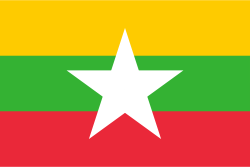India Launches 'Operation Brahma' to Aid Myanmar Earthquake Victims
 Myanmar
MyanmarIn Myanmar, young combatants from Generation Z are organizing resistance against the military junta that has ruled since the February 2021 coup. Located near the Thailand border, these fighters, primarily from ethnic groups including the Karenni Nationalities Defense Force (KNDF), have taken to guerrilla tactics to reclaim control and protect civilians amidst the ongoing conflict, which has resulted in significant loss of life and widespread displacement.
These young resistance fighters, some as young as 21, are navigating treacherous terrains while facing daily threats from military airstrikes. Many joined the fight after witnessing the violent suppression of civilian protests following the military takeover. Abel, a 26-year-old guerrilla, emphasizes the persistent danger from air raids despite their control of parts of the border, revealing the constant tension on the frontlines.
Since the coup, more than 5,000 people have died, and over three million have been displaced, according to the United Nations. The humanitarian crisis has deepened with millions in need of immediate assistance as the junta continues bombarding civilian targets, including schools and hospitals, revealing the brutal impact of the conflict on the population.
In this environment, the morale of the young fighters remains resilient. General Maui, a leader in the KNDF, articulates a vision for a democratic federalism that respects Indigenous rights, stating, "In the end, we will win. We have no alternative." Their commitment to the cause is reflected in their personal sacrifices, with fighters like Thu Ra Aung and Pasqwar Let channeling their grief over lost loved ones into their battle efforts.
Demoso, a city recently claimed by resistance forces, is now sheltering over 150,000 residents who have fled the ongoing violence. The city, representing a semblance of safety and unity for displaced individuals, starkly contrasts the destructive realities faced daily on the frontlines.
Despite the overwhelming challenges, the young combatants remain committed to their fight for freedom, determined to challenge the military's long-standing rule in Myanmar.
 Myanmar
Myanmar Myanmar
Myanmar Myanmar
Myanmar